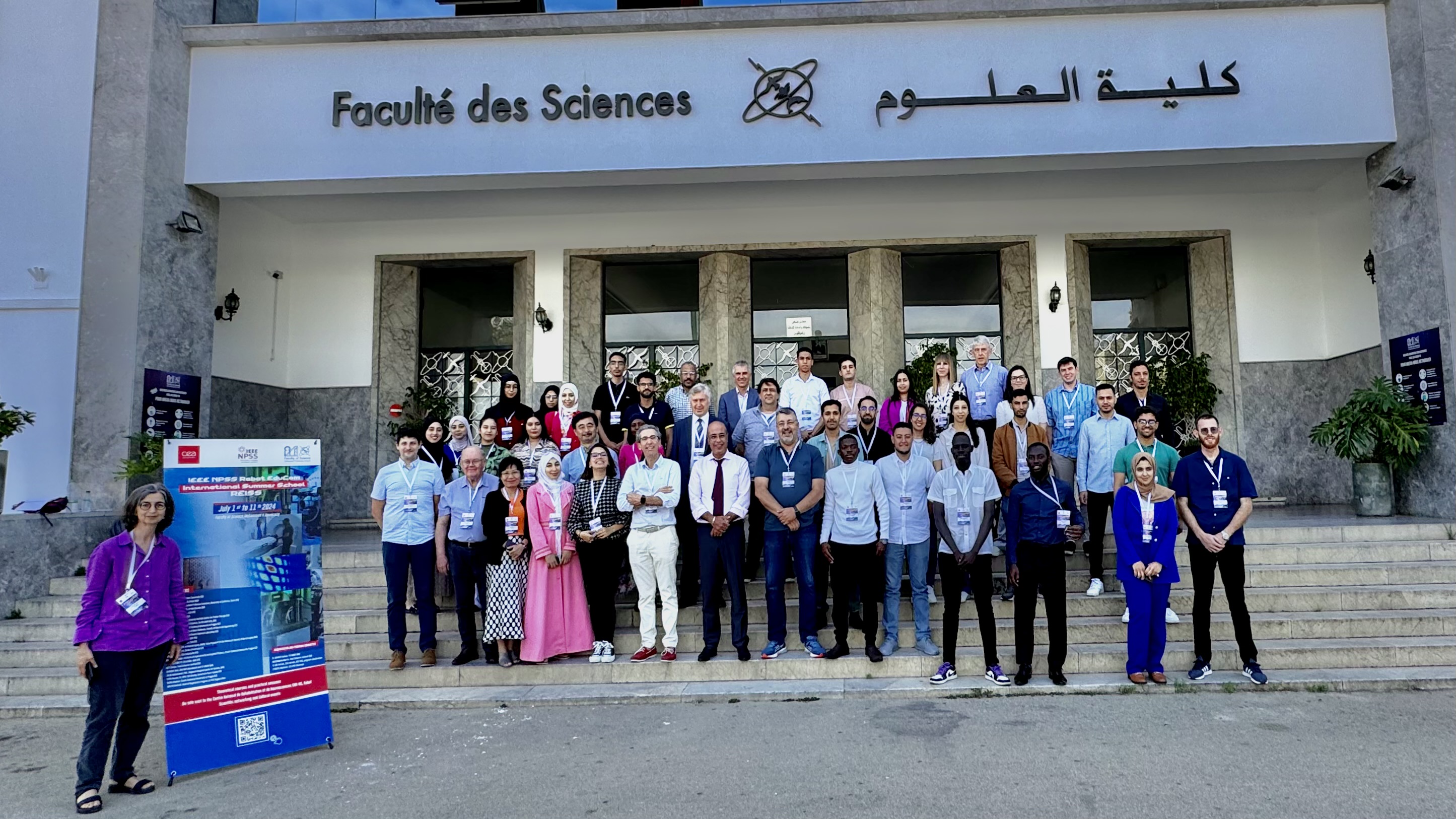IEEE NPSS Rabat EduCom International Summer School (REISS)

We have the pleasure to announce the Rabat IEEE NPSS EDUCOM International Summer School REISS that will be held at the Faculté des Science, University Mohamed V of Rabat, Morocco from July 1st- to 10th, 2024.
This 2024 International Summer School will cover theoretical and practical courses as well on nuclear radiation instrumentation, detection and measurement starting from basics physics and focusing on selected applications. It will use our long experiences from past NPSS instrumentation schools in Japan (2014), Vietnam (2016) , Malaysia (2017), South Africa (2018) and Dakar (2022). These Summer Schools aim to make the students familiar with the actual applications, their specificities and constraints.
The proposed activity is consistent with the NPSS’ Mission Statement “To provide opportunities for scientific exchange and career development and to promote a diverse and inclusive community of nuclear and plasma scientists and engineers”. With its high-quality course program given by experienced lecturers, it will contribute to the formation of students (under graduate and post-graduate) and young researchers in the field of nuclear instrumentation and radiation measurement. The participants will also benefit from the Summer School by developing or expanding their network, especially with promotion for becoming active NPSS members.
Furthermore, a special event to encourage Women in Engineering (WIE) will be organized during the school period (afternoon or evening).
The main features of the school are: 8 FULL DAYS (One week and half) on the main 3 topics dealing with nuclear radiation instrumentation and measurement and their applications to fundamental sciences, energy (fission and fusion) and nuclear medical sciences. The main objectives are
- To train students in the area of radiation detectors and their applications
- To enhance the development of nuclear sciences in North and central African countries
- To promote the participation of young scientists and local mentors in radiation measurements and related fields
Plenary Lectures:
- Interaction of radiation with matter and fundamental aspects of radiation detectors
- Data acquisition, statistics treatment, analysis, and image processing
- Fundamentals on electronics - semiconductor detectors
- Medical nuclear physics instrumentation from diagnostic to treatment
- Radiation instrumentation and measurement methods for Nuclear energy (Fission, Fusion)
- Radiation instrumentation and measurement methods for Security and Safety
- Tips for presenting a scientific work
Laboratories
Parallel ‘exercises’ sessions (Photodetectors,Time of Flight, Timepix and Medipix, EasyPET, GATE tool, Data analysis with AI from ChatGPT, modeling and simulation) will let the students «touch» the applications. It will be divided in 4 Experimental Sessions working in parallel for groups of 6/7 people each. All confirmed registered participants will attend the laboratory exercises
The registration is now closed
Questions to be addressed to: “martin.grossmann@psi.ch”
